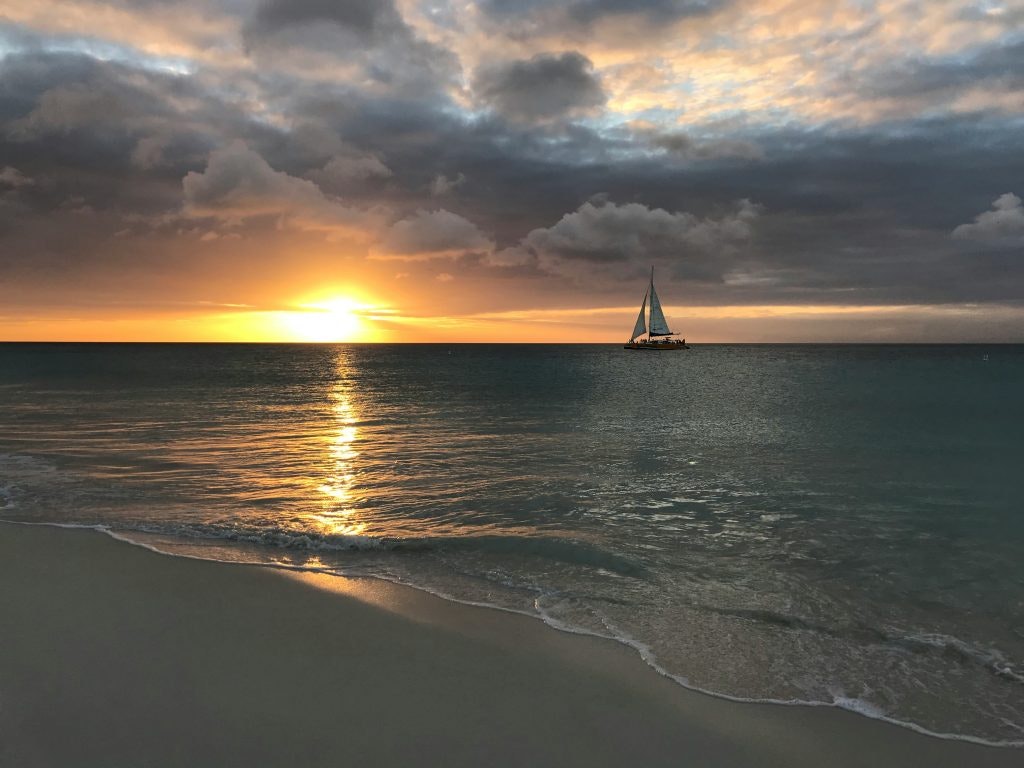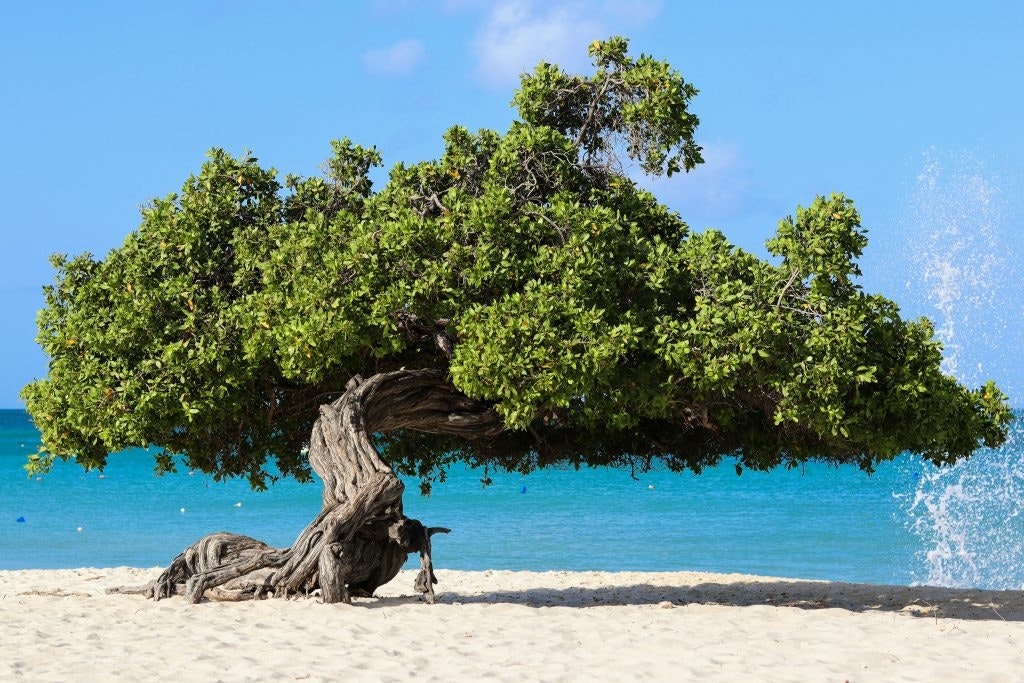Aruba is a Caribbean island in the Lesser Antilles and Leeward Antilles Island groups. Known for its consistent warm weather and clear beaches, Aruba has an average annual temperature of 82°F (28°C). Visitors can use US dollars alongside the official currency, the Aruban florin.
In this article, you’ll find 9 fun facts about Aruba that might inspire your next trip to Oranjestad, the capital city.
>> Have a look at the travel resources you need before taking off to Aruba
9 Fun Facts About Aruba

- Aruba has a dry climate and constant trade winds year-round
- Aruba has a key role in wildlife conservation
- Aruba is a multilingual island with annual carnival celebrations
- Aruba’s economy thrives on tourism and currency
- Aruba has a diverse selection of activities
- Aruba has a harvest festival with unique traditions
- Aruba’s history is shaped by gold, oil, and aloe vera
- Aruba grows and harvests local flora for medicinal purposes
- Aruba is part of the ABC islands
1. Aruba has a dry climate and constant trade winds year-round
Aruba is dry with an average rainfall of 15 inches annually (381mm). The island lies outside the hurricane belt which minimizes the risk of hurricanes.
Aruba has constant trade winds blowing across the island. These steady winds are appreciated by windsurfers who visit Aruba to enjoy these conditions.
>> Costa Rica is also known for its great surfing service
2. Aruba actively protects wildlife and ecosystems
Aruba safeguards nesting areas for sea turtles, which use the island’s pristine beaches from March to November. Conservation groups and Arikok National Park rangers guide hatchlings safely to the sea.
Efforts also target controlling invasive species, such as lionfish and boa constrictors, while eco-friendly initiatives like reducing single-use plastic bags helps preserve Aruba’s environment.
>> Want to help protect wildlife and ecosystems? Check out our Turtle Conservation Program.

3. Aruba speaks four languages and celebrates Carnival every year
Arubans speak Dutch, Spanish, English, and Papiamento, a creole language blending Portuguese, African, Dutch, and Spanish influences. Dutch and Papiamento are Aruba’s official languages. Papiamento is widely spoken by Aruba’s population reflecting the island’s colonial past and status within the Kingdom of the Netherlands.
Each February, the island celebrates Carnival with parades, music, dances, and beauty pageants. The happy island comes alive as locals and tourists alike enjoy costumes, dance, food and fare.
4. Aruba’s history reflects the gold, oil and aloe vera industries
Aruba’s gold rush in the 19th century left behind landmarks like the Bushiribana Gold Mill, a historic site that still stands today.
During World War II, the Lago Oil Refinery in Aruba was one of the largest in the world and played a key role in the Allied war efforts. Aloe vera has also shaped the island’s history, with Aruba Aloe remaining a key brand and symbol of its agricultural heritage.




